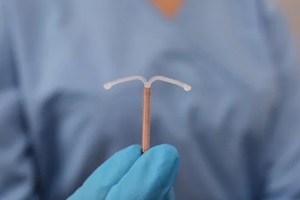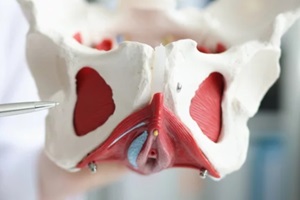 An intrauterine device, or IUD, offers convenient and effective long-term birth control without remembering daily pills. As popular as IUDs are becoming due to such benefits, some still hesitate about getting one due to concerns over the insertion being painful.
An intrauterine device, or IUD, offers convenient and effective long-term birth control without remembering daily pills. As popular as IUDs are becoming due to such benefits, some still hesitate about getting one due to concerns over the insertion being painful.
It’s understandable to feel anxious. But rest assured, there are numerous methods available to help make getting an IUD placed comfortably manageable.
While every woman experiences sensations differently during the procedure, using at least one pain management approach often makes all the difference in minimizing discomfort.
From at-home tips beforehand to in-office relief choices during and aftercare, once it’s in place, you can take steps to ease the insertion process.
Arm yourself with the knowledge of all the techniques available, communicate with your gynecology provider about your preferences, and take an active role in your comfort.
Before the Appointment: Prepare Your Body and Mind
Taking action before your scheduled IUD insertion date can set you up for success in lowering pain once the procedure begins. Consider the following self-care tactics:
Take a Low-Dose Pain Reliever
About an hour before your insertion appointment, take 400-800 mg of an over-the-counter ibuprofen or other NSAID tablet with food and water.
This helps reduce levels of prostaglandins, substances similar to hormones that trigger uterine cramping. Just be sure not to exceed dosage recommendations.
Have a Light Meal
Don’t arrive at your procedure with an empty stomach. This can make you feel faint or dizzy during the procedure, heightening discomfort. Eat something light an hour or two beforehand.
Time it Right
Schedule your insertion appointment, ideally, while you’re still on your period or very soon after it ends when the cervix is naturally more open and soft. This reduces the dilation required during insertion, making it easier to place the IUD correctly.
You may be able to feel your cervix during this time period to determine if it seems softened and dilated enough to proceed comfortably with insertion.
While timing with your cycle isn’t always possible, if you have flexibility, try arranging it for maximum comfort.
Address Emotions with Your Provider
It’s completely normal to feel some anxiety about the prospect of pain or the procedure itself. Share any emotional concerns openly with your gynecology provider beforehand so they can reassure you and even prescribe an anti-anxiety medication if helpful. Feeling relaxed and cared for emotionally helps minimize distress.
Lean on Social Support
If permitted, bring a trusted friend or relative to your insertion appointment for moral support before and after. While they may not be allowed in the exam room, having someone there to talk to during prep and drive you home safely afterward can aid in comfort.
Try Meditation and Deep Breathing
In the days before insertion, begin practicing deep breathing, meditation, or similar relaxation skills when feeling nervous.
Then, tap into these during the procedure to stay calm and centered, reducing muscular tension that can worsen pain. Let your care team know the calming tactics you find most effective.
In the Exam Room: Options to Minimize Discomfort
 Once you arrive for your IUD insertion, the real deal begins, but that doesn’t mean you must grit your teeth and bear excruciating pain during the process.
Once you arrive for your IUD insertion, the real deal begins, but that doesn’t mean you must grit your teeth and bear excruciating pain during the process.
You have choices available right then and there for managing discomfort thanks to advances in pain control approaches suitable for outpatient gynecologic procedures.
Discuss any of the following with your women’s health provider to decide which combination offers you the highest degree of relief:
Paracervical Block
This targeted method involves injecting a local anesthetic, such as lidocaine, at the base of the cervix to numb the area. Evidence shows it may minimize pain during and for a short time following the insertion, although some patients experience discomfort during the injection itself.
More clinicians now routinely offer paracervical blocks, but if yours doesn’t, ask if they think it would be a helpful option for you. There are some mild risks, such as dizziness or numbing of the vagina. Still, most women tolerate it exceptionally well for the pain relief benefit
Oral Medication
Beyond over-the-counter NSAID tablets taken beforehand at home, some physicians also provide stronger prescription oral pain medications right before insertion at their office.
These may incorporate opioids such as hydrocodone or oxycodone, anti-inflammatories such as celecoxib, muscle relaxers including cyclobenzaprine, anti-anxiety agents such as alprazolam, and other formulations alone or in combination.
Oral meds with a sedative effect can be especially helpful for those experiencing extreme anxiety exacerbating pain perception. Discuss the pros and cons with your clinician to decide if medical pain control fits your situation.
Stay in Your Body with Distraction
Try distraction techniques to keep your mind occupied so it’s less focused on physical discomfort.
Options include listening to music or a meditation app with provided headphones, actively conversing with staff during the procedure, scrolling social media on your phone if permitted, or even squeezing a stress object with your hands. Tuning into sensations apart from those in your pelvic region diminishes distress for many patients.
Breathe and Relax Pelvic Muscles
 Remember to employ the breathing you practiced to inhale and exhale fully, along with intentionally relaxing your pelvic muscles instead of tensing up.
Remember to employ the breathing you practiced to inhale and exhale fully, along with intentionally relaxing your pelvic muscles instead of tensing up.
During insertion, stay centered in your body in the present moment. Through calm focus, you can circumvent anxiety, which leads to clenching, making pain worse.
Let Raleigh Gynecology & Wellness Help You Manage IUD Insertion Discomfort
The Raleigh Gynecology & Wellness team abides by the philosophy that our patients come first, and your personalized needs are our priority for supporting excellent gynecologic health.
We offer caring guidance focused on empowering you to make the best decisions for your body and life circumstances regarding birth control options and all aspects of women’s well-being care.
If you’re interested in learning more about managing discomfort during IUD insertion, call us today at (919) 636-6670 or book an appointment online to meet with one of our highly trained d gynecology specialists.
